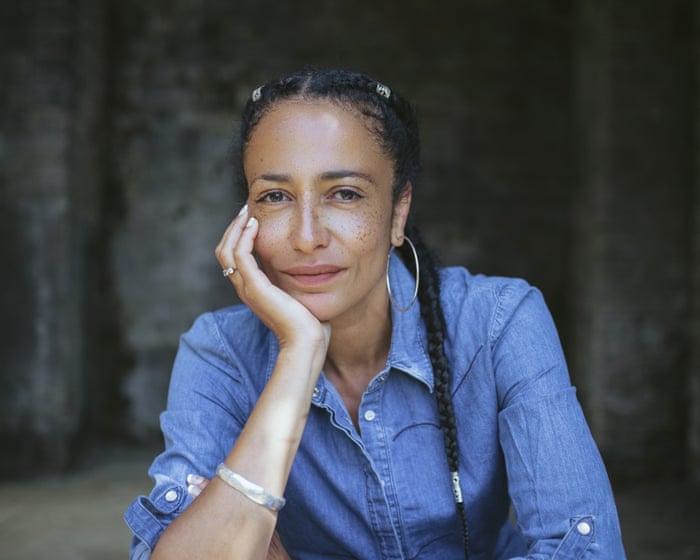8. The Autograph Man (2002)
After the massive success of White Teeth—which famously sold for a six-figure sum while Zadie Smith was still in university, making her a literary star and a symbol of multiculturalism at just 24—how did she follow it up? With a novel about a Chinese-Jewish autograph hunter who smokes pot, exploring the pitfalls of fame and the emptiness of pop culture, naturally.
The Autograph Man kicks off with sharp wit, introducing three boys in the back of a car on their way to see a wrestling match between Big Daddy and Giant Haystacks at the Royal Festival Hall. As 12-year-old Alex-Li Tandem gets Big Daddy’s autograph, sparking a lifelong obsession, his father dies suddenly from a brain tumor. Sadly, the rest of the book doesn’t quite match the power of its opening. Critics were harsh: Michiko Kakutani, who had raved about White Teeth, called it “a poky, pallid successor” in the New York Times, while James Wood in the LRB described it as “cartoonish” and filled with “misplaced ironies and grinning complicities.” Others were kinder. In any case, Smith was just clearing her creative decks.
7. The Wife of Willesden (2021)
Given Smith’s gift for dialogue, it was inevitable she’d write a play. Her first and only stage work is a lively adaptation of The Wife of Bath’s Tale from Chaucer’s Canterbury Tales, set at a pub open-mic night on Kilburn High Road. Chaucer’s Alyson becomes Alvita, a Jamaican-born British woman in her mid-50s who has been married five times. Smith writes in the introduction that Alvita’s voice—”brash, honest, cheeky, salacious, outrageous, unapologetic”—is one she’s “heard and loved all my life.” The audience learns, “She’s been that bitch since 1983.” First staged at Kilburn’s Kiln theatre, it moved to the National Theatre in London (where it can still be viewed online) and then to New York. Bold and unflinching, it’s a woman telling her truth across the centuries.
6. The Fraud (2023)
Smith’s first venture into historical fiction is inspired by the Tichborne trial of 1873, in which a butcher from the East End, living in Australia, claimed to be the missing heir to a fortune. She discovered the story close to home—the fraudster is buried in an unmarked grave in Willesden, the setting for nearly all of Smith’s fiction. With its charismatic populist hero spreading conspiracy theories and fake news, this Victorian tale echoes modern issues. The writing is as sharp and confident as ever, and many critics praised it. However, perhaps because it relies more on plot (never Smith’s strongest suit) than character, the novel feels less vibrant and alive than her earlier work. We turn to Smith to see how we live today.
5. Swing Time (2016)
Smith described her more serious fifth novel as an attempt “to express how it is to be in the world as a black woman.” In 1982, two girls from nearby housing estates meet in a dance class in a Willesden church hall. The novel weaves through time and place, touching on reinvention, fame, motherhood, and—ahead of its time—cultural appropriation. Smith is at her best when dissecting the subtle nuances of class and race. From Barbies and the Argos catalog to goths and MTV, she perfectly captures growing up in the 80s and 90s, set to a soundtrack of Michael Jackson and Rakim. While the social commentary can feel a bit heavy-handed at times, the core story of female friendship, with all its jealousy, rivalry, and betrayal, remains compelling throughout.
4. NW (2012)
Childhood bonds and the conflicting desires for freedom and belonging are also central to Smith’s most experimental novel. Critical reception was mixed: Kakutani once again criticized it as “clunky,” “weirdly contrived,” with “paper doll characters.””A joyous, optimistic, angry masterpiece,” some declared, while others called it “her best work.” Set in northwest London—naturally—NW explores familiar territory for Smith, yet it channels the spirit of Woolf rather than Dickens. As Smith herself notes, the optimism of her earlier fiction has given way to “existential bleakness.” If you read novels to understand how things feel, what the author describes as “the concrete ‘thingyness’ of people,” rather than for the plot, you’ll immerse yourself in the lives of thirtysomethings Leah and Natalie against the backdrop of Kilburn in the summer of 2010. Otherwise, you might want to skip it. The book is magnificent in parts but frustrating as a whole.
3. Feel Free: Essays (2018)
In the UK, we tend to be wary of the essay form—perhaps seeing it as too intellectually flashy—while in the US, it’s a mark of prestige, with all the cool writers embracing it. Thankfully, Smith has emerged as one of our most vibrant thinkers and storytellers. This collection covers topics from Justin Bieber to Brexit, Jay-Z to Hanif Kureishi, Joni Mitchell to Schopenhauer, the climate crisis, her childhood bathroom, and joy, all guided by her sharp intellect and wit. Here, Smith reflects on the page about what matters most to her: books, music, film, injustice, and various freedoms. Be warned: reading her essays may make you feel like you’ve drifted through life with the critical insight of an amoeba. But you’ll come out the better for it, and she’s always excellent company. A new collection, Dead and Alive, is out this month.
2. White Teeth (2000)
Smith herself, then unknown and now famous, described White Teeth in the small literary magazine Butterfly as “the literary equivalent of a hyperactive, ginger-haired tap-dancing 10-year-old.” Meanwhile, everyone else was busy comparing her to Martin Amis, Salman Rushdie, Hanif Kureishi, and even Dickens. This lively, sunny tale of two WWII veterans—best friends Archie Jones from Reading and Samad Iqbal, a Bengali Muslim—and their extended families who end up in Willesden turned out to be the novel everyone had been waiting for. Smith burst onto the scene with a voice that was funny, fearless, philosophical, and hip, perfectly capturing the hopefulness of the new millennium—publishing’s answer to Cool Britannia. While the plot is a bit over-the-top, the author was clearly outrageously talented. Twenty-five years later, White Teeth remains a landmark in British fiction.
1. On Beauty (2005)
“One may as well begin with Jerome’s emails to his father,” opens Smith’s third novel, signaling that it’s a reimagining of E.M. Forster’s classic Howards End. What nerve! Two families—the liberal Belseys from New England and the establishment Kippses (Forster’s Schlegels and Wilcoxes) from Kilburn—become fatefully intertwined. Art, faith, rap, race, pain, and death are all woven into a comic campus novel and a bold literary tribute. On Beauty is the only Smith novel to have been shortlisted for the Booker Prize (how did that happen?), and it won the Orange Prize, now the Women’s Prize. Martin Amis said he reads everything by Smith “with a constant smile of admiration”; this book will make your face ache. Much is made of the precociousness of White Teeth, but Smith was only 30—the same age as Forster—when she pulled off this erudite, expansive, and moving novel. The author turns 50 this month. Keep an eye out for more. To browse all titles by Zadie Smith, visit guardianbookshop.com. Delivery charges may apply.
Frequently Asked Questions
Of course Here is a list of FAQs about Zadie Smiths books ranked from White Teeth to Swing Time in a natural and helpful tone
General Beginner Questions
Q Im new to Zadie Smith Which of her books should I start with
A Most people start with White Teeth Its her famous awardwinning debut that perfectly showcases her energetic and witty style
Q What are Zadie Smiths books generally about
A Her books often explore themes of cultural identity race family and friendship in modern multicultural London She writes about how our personal histories shape who we are
Q Are all of her novels connected Do I need to read them in order
A No each novel is a standalone story with different characters You can read them in any order you like
Q Ive heard her writing can be challenging Is that true
A It can be for some readers She uses rich detailed language and often has multiple storylines and a large cast of characters White Teeth and NW are particularly known for their complex structures
BookSpecific Thematic Questions
Q Why is White Teeth considered her best book
A Its celebrated for capturing the spirit of multicultural Britain at the turn of the millennium with incredible humor intelligence and a vast interconnected cast of characters It put her on the literary map
Q What is On Beauty about and what book is it inspired by
A Its a campus novel about two feuding academic families and their personal and intellectual clashes Its a modern homage to EM Forsters Howards End
Q I loved the family sagas Which book is most like White Teeth
A The Autograph Man and Swing Time also delve into friendship and identity but NW is her other major London novel For a multigenerational family story White Teeth is still the standout
Q What makes NW so different from her other books
A NW is her most experimental novel in terms of style It uses a fragmented nonlinear narrative to reflect the disjointed experience of modern city life focusing on two childhood friends




